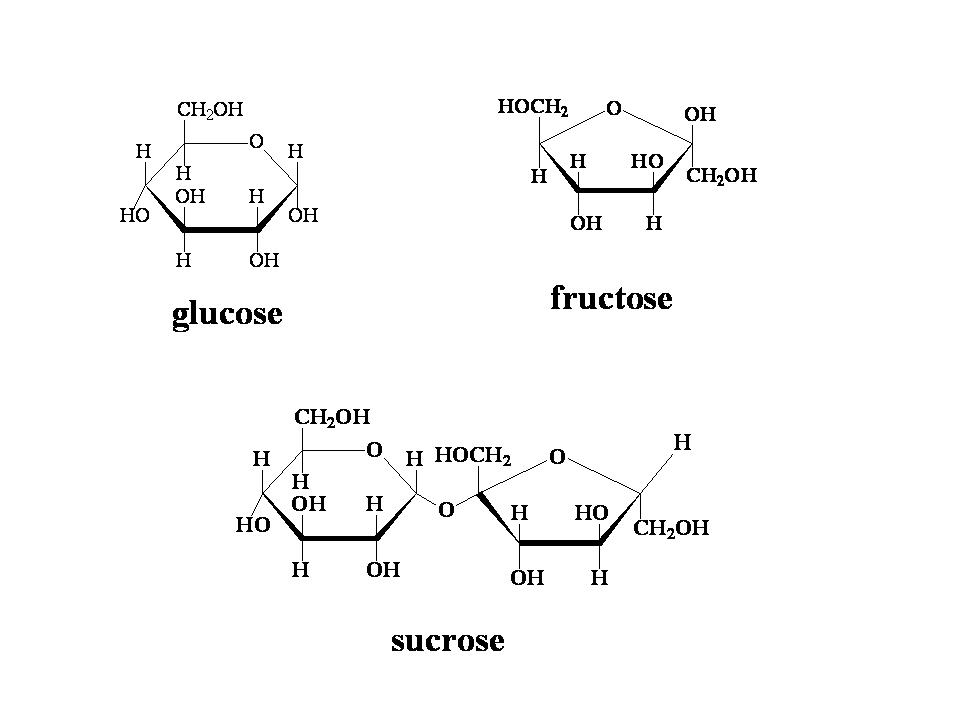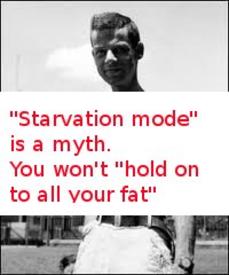Sugar FAQ
Replies
-
lemurcat12 wrote: »I looked at the EU reasoning: see http://www.efsa.europa.eu/en/scdocs/doc/nda_op_ej1008_labelling_reference_intake_values_en.pdf, and there's no claim that sugars above a certain level have negative health effects. The concern is to be able to provide a % of RDI number, so what they do is figure out what people would get if they complied with the recommended daily intake and then limited other sugars to the numbers recommended. The assumption seems to be that for most people intrinsic sugars likely won't be any higher, as most people don't eat the RDI of fruits and veggies.
Yep, it's based around "It has been estimated that indigenous sugars
provided by recommended daily intakes of fruits, vegetables, cereals and dairy products would amount to about 45 g in adults. Assuming that the remaining 45 g of sugars (up to the 90 g proposed for the labelling reference intake) are added sugars, this would correspond to 9 E% for a 8400 kJ or 2000 kcal diet. " and isn't a limit as such but a guideline intake.
This is a similar methodology to that MFP have used, and Health Canada's nicely rounded 100 g/day of Total Sugars. It's necessary because labels and analysis gives total sugars and not a breakdown of where it came from.0 -
It feels like this could use a bump today.0
-
This thread is useful and I'm bumping it back to the top of the boards. Carry on.0
-
Tagging to read.0
-
This was a very good read. I missed it when it was first posted. I'd recommend that it make it to being a sticky, but...0
-
Tagging to follow and find again because like others, I think the way the information is presented in the OP is helpful to those who may have misconceptions about sugar - different types and acceptable amounts.0
-
Great post!0
-
Does the Premium Version of MFP break out added sugars with limits because I have the exact same question??redperphexion wrote: »Excellent! Was going to start a post about sugar because I am going over the MFP allowance (44g) nearly every work day - between a full-fat balkan yogurt for my morning snack and an unsweetened apple/blueberry sauce for my pm snack, I'm already over half of my allowance. Add two slices of whole wheat V8 at lunch, and that's it, I'm done for sure - nothing in my coffee or dinner allowed. If I have a tsp for jam for breakfast, forgeddaboutit.
I'm consuming between 60-70g a day on average. But, perhaps this isn't as 'bad' as I first thought. Plus I'm in Canada, so I'm aiming for a max of 100g, right?
0 -
I like this post. Just giving it a bump for others.0
-
Yearly bump.0
-
Bumping this awesome thread's OP.Firstly, if you don't want to track sugar daily you can turn it off in the settings of your food diary at http://www.myfitnesspal.com/account/diary_settings (top left)
Secondly, if you want to use a higher target than MFP's standard you can change that in Custom Goals at http://www.myfitnesspal.com/account/change_goals_custom (lower left)
1. Will eating sugar affect my weight loss.
Not specifically. Medically prescribed weight loss diets often use sugar as an ingredient (sucrose, fructose or glucose) to get tight control of their composition. You can lose weight on a "juicing" diet where sugars provide much of the nutrition. Consuming or restricting sugar as part of your overall diet may have an influence, but eating some sugar will not in itself stop weight loss.
2. What is MFP's sugar target ?
The value is set at 15% of your daily calories from all the sugars in your foods. If your calorie goal is 2000 cals the sugar part is 300 cals or 75 grams per day. See http://myfitnesspal.desk.com/customer/portal/articles/1375583-a-message-about-myfitnesspal-s-updated-nutrition-goals
3. Where does the target come from ?
It was revised following the recommendations to increase fruit and vegetable intake in the Dietary Guidelines for Americans 2010, and using an average of the sugar found of sample menus provided by the USDA. Previously it was based on "added sugars" rather than all of the sugars in the diet and many found the level too restrictive at 8% of calories.
The American Heart Association suggest limits on added sugar "For most American women, no more than 100 calories per day, or about 6 teaspoons of sugar. For men, it’s 150 calories per day, or about 9 teaspoons." That's 25 or 38 grams per day respectively of added sugars based on "no more than half your discretionary calories". http://circ.ahajournals.org/content/120/11/1011.full.pdf
The World Health Organisation (WHO) sets a guideline for added sugars to be less than 10% of energy intake. http://www.who.int/bulletin/volumes/81/8/en/Steyn0803.pdf
The WHO has revised its guidance in 2015 to "adults and children reduce their daily intake of free sugars to less than 10% of their total energy intake. A further reduction to below 5% or roughly 25 grams (6 teaspoons) per day would provide additional health benefits".
The EU have discussed a limit of 90g (18% of energy on a 2000 cal diet) for total sugars and observed that 45g is a typical adult intake of intrinsic or naturally occurring sugars from fruit, veg and dairy. http://www.efsa.europa.eu/en/efsajournal/doc/1008.pdf
Australia has a Dietary Recommended Intake value for total sugars of 90g per day, as has the EU (for a 2000 calorie diet - so 18% of energy). Annex 13 of Regulation (EU) No 1169/2011
4. What are "added sugars" ?
This depends on your regulatory authorities. In the UK "added sugars is defined as any mono- or
disaccharide or any other food used for its sweetening properties. This would include, but is not exclusively limited to: sucrose, fructose, glucose, glucose syrups, fructose-glucose syrups, corn syrups, invert sugar, honey, maple syrup, malt extract, dextrose, fruit juices, deionised fruit juices, lactose, maltose, high maltose syrups, Agave syrup, dextrin and maltodextrin. The sugars contained in dried fruit are assumed to be intrinsic and are not included as added sugars. The sugars in milk powder are not included as added sugars, in line with COMA dietary guidelines which deemed sugars in milk as a special case and did not set guidelines to limit their intake."
Others are similar, the target being sugars deliberately added to a food product rather than those which happen to occur naturally in the other ingredients of the product. These regulatory definitions are often a political compromise between science, health and food industry interests - the exclusion for sugar in milk for example is probably a result of pressure from the dairy industry and may have little scientific credibility.
5. What are "free sugars"
Free sugars refer to monosaccharides (such as glucose, fructose) and disaccharides (such as sucrose or table sugar) added to foods and drinks by the manufacturer, cook or consumer, and sugars naturally present in honey, syrups, fruit juices and fruit juice concentrates.
The WHO guideline does not refer to the sugars in fresh fruits and vegetables, and sugars naturally present in milk, because there is no reported evidence of adverse effects of consuming these sugars.
6. Which sugars are natural ?
All of them. Sucrose is found in sugar cane and sugar beet as well as in many fruits - half the sugars in orange are sucrose. Glucose is common in fruit but is less sweet than fructose. Fructose is mainly found in honey and fruit and has the highest sweetness intensity of the sugars. Lactose is a sugar and the main carbohydrate in milk products. High fructose corn syrup (HFCS) is perhaps the most manipulated sugar product in common use - starch from corn is broken down to glucose and 42-55% of that are then "isomerized" by enzymes or similar processes into fructose molecules to create a liquid syrup with the sweetening characteristics of sucrose but at lower cost.
7. How do natural and added sugars differ chemically ?
They don't. The sucrose molecule is the same wherever you find it. It can be split into a glucose and a fructose molecule under acid conditions or by an enzyme. The resulting fructose and glucose molecules are the same as the native fructose and glucose molecules from fruit.
Note that fruit juice is a natural sugar but becomes an "added sugar" if used to sweeten a food product.
8. Are natural sugars processed differently in the body ?
No. A glucose molecule or a fructose molecule looks the same to your liver, muscles etc wherever it came from. Fructose molecules follow a different pathway via the liver in contrast to other sugars or carbohydrates, some scientists believe this makes fructose potentially problematic and a "cause" of obesity, diabetes, etc. Robert Lustig, John Yudkins, David Gilespie and others have written books with emotive titles about the "dangers" of sugar or fructose.
In eating a whole fruit the fiber content and dilute nature of the sugars reduces the rate and amount we consume. The same cannot be said of fruit juice (fibre removed) which can contain 50% more sugars than regular cola drinks. Fruit has some vitamins and minerals and is generally perceived as "healthy", especially by its marketers, but ultimately the sugar in a fruit is the same stuff as the sugar in sugar cane and looks identical inside your organs.
Typically the blood sugar response to fruit, juice or puree is initially very similar, but a greater insulin response to faster absorption results in a later drop to a lower level of blood sugar :-
9. Are there any health arguments against sugar in fruit ?
There is some weak epidemiology that relatively high levels of consumption of certain fruits - cantaloupe and perhaps strawberries - are associated with increased risk of Type 2 diabetes. Other fruits appear to reduce risk. In most epidemiological studies the level of consumption in the public is around 1 piece of fruit per day, even the "5 a day" message would give at most 100 grams a day of sugar intake. Fruit juice consumption was also associated with increased risk of Type 2 diabetes.
10. What should I do ?
This is a matter of personal choice. The approach of 90g total sugars per 2000 calories (18% of energy) seems to be accepted in a number of countries, with MFP's minimum 1200 calorie setting this would be 54g of sugars. At this level the fructose intake will be below the level that some regard as potentially problematic. MFP's current approach will give you 45 grams at 1200 calories. If you have less than 45g as a goal you should re-run the goal setting.
If your consumption of fruit (or any food) takes you above this level then you may wish to research further the types of sugar you are eating and the potential health implications. You may choose to set a higher level, or simply to ignore it and just track total carbohydrates which include all sugars. You could replace a banana with an apple to reduce sugar intake, or make other similar changes to your diet.
If you read or follow Robert Lustig, John Yudkins or David Gilespie and buy into their arguments then you may want to stick with the MFP value or set a different one based on what you have learned.
Re the last sentence, if you don't follow LCHF/Keto etc, you can ignore or increase the MFP sugar allowance.
One less thing to worry about. Instead, eating according to your calorie limit and eating the foods that provide satisfaction and sustainability are #1 for many.
Here's a balanced and science-based link about sugar I found today.
https://www.precisionnutrition.com/truth-about-sugar0
This discussion has been closed.
Categories
- All Categories
- 1.4M Health, Wellness and Goals
- 398.5K Introduce Yourself
- 44.7K Getting Started
- 261K Health and Weight Loss
- 176.4K Food and Nutrition
- 47.7K Recipes
- 233K Fitness and Exercise
- 462 Sleep, Mindfulness and Overall Wellness
- 6.5K Goal: Maintaining Weight
- 8.7K Goal: Gaining Weight and Body Building
- 153.5K Motivation and Support
- 8.4K Challenges
- 1.4K Debate Club
- 96.5K Chit-Chat
- 2.6K Fun and Games
- 4.8K MyFitnessPal Information
- 18 News and Announcements
- 21 MyFitnessPal Academy
- 1.5K Feature Suggestions and Ideas
- 3.2K MyFitnessPal Tech Support Questions







